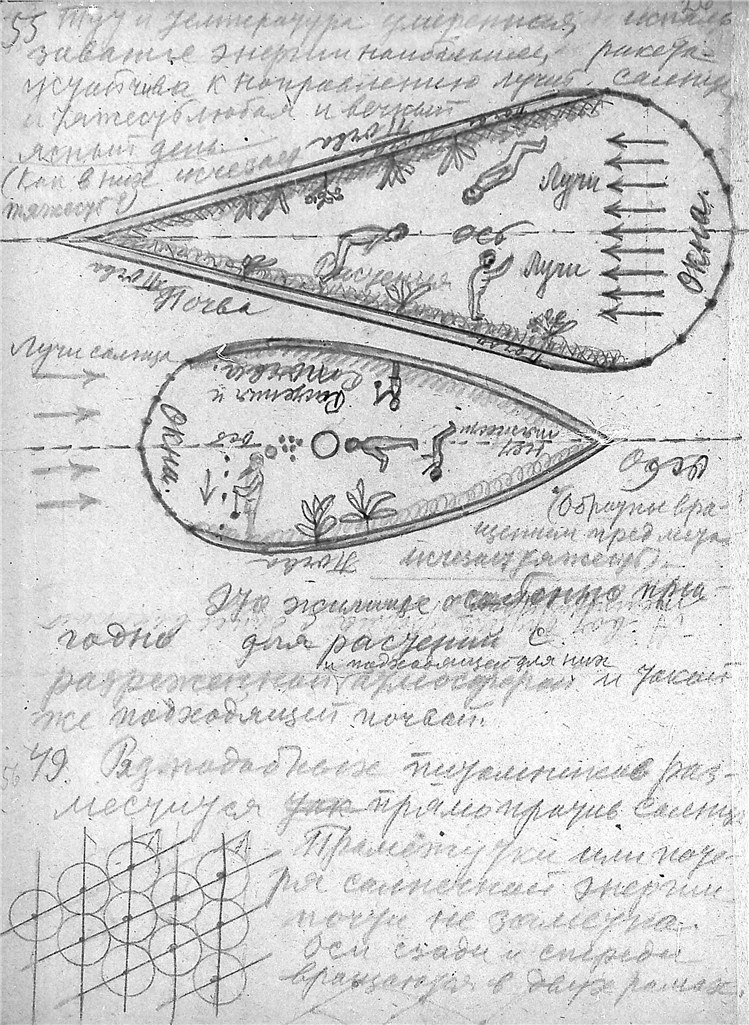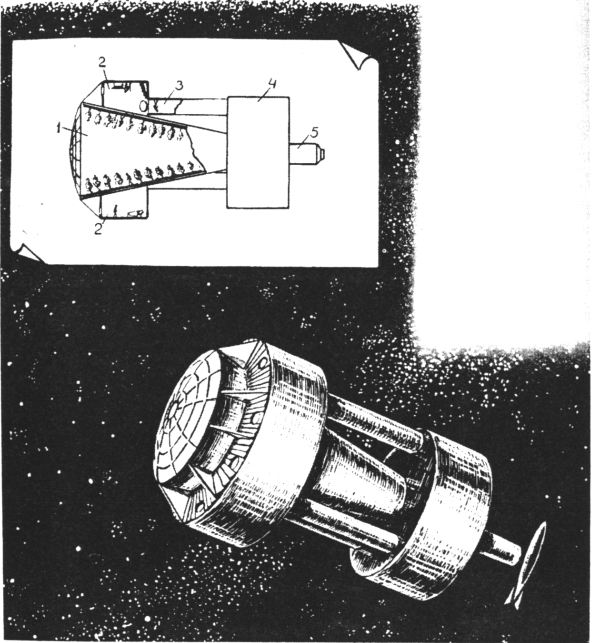One of the great founders of the space age, Konstantin Tsiolkovsky, was a prolific scribbler of intersting ideas for how to get around and live in space. One of his concepts was for a conical “greenhouse.” This apparently simple structure would rotate around its long axis to generate artificial gravity; a hemispherical window at the wide end would let in sunlight. The greenhouse would be oriented so that it was always pointed at the sun.
An interesting (to me, at any rate) thing about this design is that virtually every time I see it illustrated, it is as a far bigger, far more developed design. Like this:
Something I’ve never been able to determine is how Tsiolkovsky’s simple scribble turned into the larger concept. Was the later design somethign he in fact drew later… or was this artistic extrapolation on someone else’s part, and it simply got picked up by others? I’ve no idea.
If you’re interested in Tsiolkovsky’s sketches, there are a bunch of ’em here:
http://www.ras.ru/ktsiolkovskyarchive/1_actview.aspx?id=84
The website itself is in Russian, so I’ve no good idea what exactly is going on or how to navigate it. But there it is. Enjoy.
4 Responses to “Tsiolkovsky’s Greenhouse”
Sorry, the comment form is closed at this time.


Well, at least he got the direction the trees are going to grow right in his sketch, which is more that whoever drew the bigger version did; they will grow towards the axis of rotation, not end up growing perpendicular to the soil on the inside of the cone. The crew had better like running up and down hill all day, as that is what going from the pointed end to the window and back again is going to feel like.
You are also going to feel a strange tug sideways as you walk that way as the circumfrance of the station increases.
I think you would be very lucky to not get very dizzy and fall flat on your ass if you tried to go any direction other than ninety degrees to the axis of rotation.
Up near the point is where the real fun will occur, with your feet trying to go one direction and your head in exactly the opposite direction, from being on opposite sides of the axis line.
I’d expect such a conical structure to have a tendency to tumble until it was rotating around it’s shortest axis of rotation. I could be wrong, but I just don’t see such an ice-cream-cone design as being all that stable. Something shaped more like a hamburger bun, and rotating around it’s short axis, would probably be much more stable.
Has this been translated? A quick check at the NASA site does not reveal anything.
This drawing looks a little _too_ prescient to be trusted:
http://www.ras.ru//CArchive/pageimages/555%5C1_084/026.jpg
Are we sure we just haven’t run into some Stalinist fabrications regarding “Russians invented everything” ?